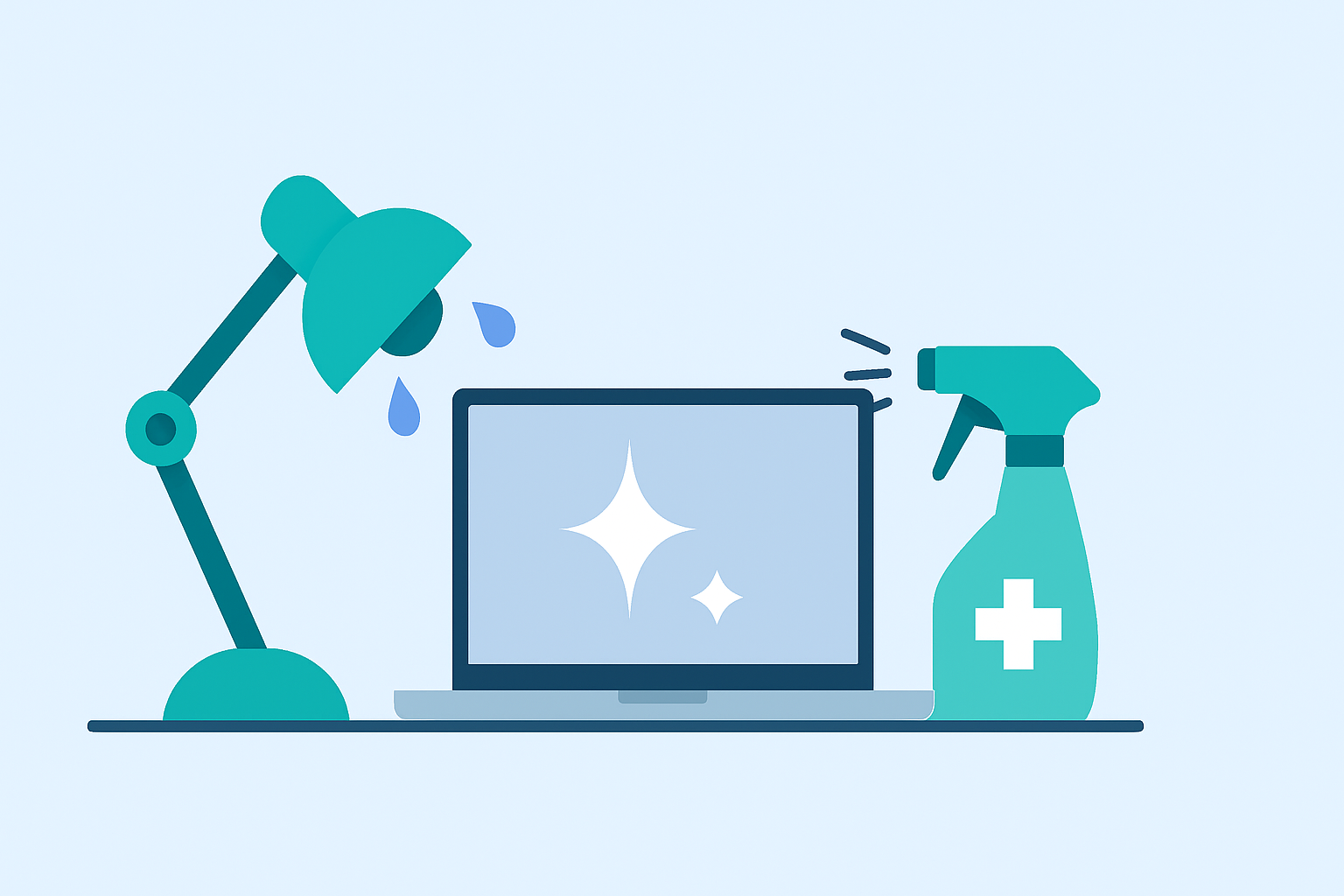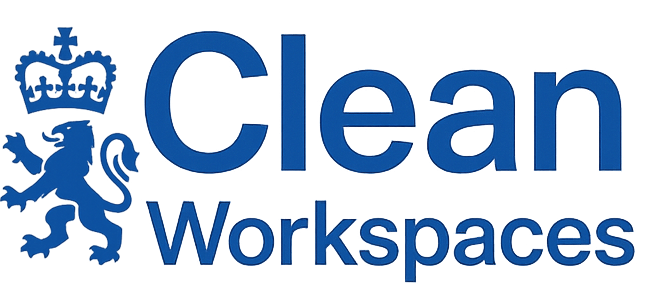Workplace Hygiene in the Era of Flexible Working
Maintaining high standards when traditional occupancy patterns no longer apply

The shift to hybrid and flexible working models has fundamentally altered workplace occupancy patterns, creating unique challenges for maintaining consistent hygiene standards. This article explores strategies for adapting cleaning protocols to these new operational realities.
The Hygiene Challenge of Unpredictable Occupancy
Traditional cleaning schedules were designed around predictable office usage patterns—typically 9-5, Monday through Friday. Today's flexible work models introduce several complications:
- Variable occupancy rates: Office capacity may fluctuate daily between 30-90%, making standard cleaning schedules inefficient
- Unpredictable usage patterns: Different employees may use the same workspace on different days
- Extended operational hours: Flexible schedules may mean facilities are in use from early morning to late evening
- Hot-desking and shared workspaces: Multiple users of the same space increase contamination risks
- Reduced visibility of cleaning activities: With fewer employees consistently present, cleaning activities may be less apparent
According to our economic impact research, organizations with hybrid work models that maintain traditional fixed cleaning schedules report 38% less cleaning efficiency and 22% higher per-employee cleaning costs than those using adaptive approaches.
Did You Know?
In flexible working environments, personal desk items are typically handled 36% more frequently than in traditional fixed-desk arrangements, significantly increasing the need for regular disinfection of these surfaces.
Data-Driven Cleaning Allocation
The most effective approach to flexible workplace hygiene is demand-based cleaning allocation driven by occupancy data:
Occupancy Monitoring Approaches:
Booking System Integration
Using desk booking and meeting room reservation data to predict and plan cleaning needs.
Key Benefits:
- • Advance planning capability
- • Employee identity tracking for contact tracing
- • Low additional infrastructure cost
IoT Occupancy Sensors
Deploying sensors that detect space usage in real-time to trigger cleaning interventions.
Key Benefits:
- • Real-time occupancy data
- • Coverage of unbooked space usage
- • Automated alerting capabilities
Access Control Data
Leveraging building access systems to track overall occupancy patterns and trends.
Key Benefits:
- • Minimal additional infrastructure required
- • Overall building utilization insights
- • Historical pattern recognition
Manual Usage Tracking
Implementing visual indicators that staff activate upon using and vacating a space.
Key Benefits:
- • Low-cost implementation
- • Simple deployment in any environment
- • Visual indicators for cleaning staff
By combining these approaches based on facility size and complexity, organizations can create an accurate picture of space utilization that drives cleaning resource allocation.
Usage-Based Cleaning Protocols
Rather than time-based cleaning schedules, flexible workplaces benefit from usage-triggered approaches:
| Space Type | Traditional Approach | Flexible Work Approach |
|---|---|---|
| Workstations | Daily cleaning of all desks | Clean after each user; visual indicator system to identify used spaces |
| Meeting Rooms | Evening cleaning of all rooms | Clean between meetings when rooms are booked back-to-back; full cleaning after designated usage threshold |
| Common Areas | Morning and evening cleaning | Occupancy-triggered cleaning when usage exceeds threshold; supplemented with regular disinfection of high-touch surfaces |
| Amenity Spaces | Fixed schedule cleanings | Usage counters trigger cleaning interventions; supplemented with self-cleaning stations |
For detailed guidance on implementing effective cleaning protocols, refer to our Surface Disinfection Protocols guideline.
Desk and Equipment Hygiene Strategies
Hot-desking and shared workstations require specialized approaches to maintain hygiene between different users:
- Post-use cleaning expectation: Establish clear protocols requiring employees to sanitize their workspace after use
- Cleaning supply availability: Provide dedicated cleaning supplies at each workstation or in easily accessible locations throughout the office
- Visual indicators: Implement systems to indicate whether a workstation has been cleaned since last use (e.g., cleanable desk signs that flip between "cleaned" and "used" states)
- Equipment considerations: Use antimicrobial covers for shared electronics or provide personal peripheral sets for employees
- Regular deep cleaning: Schedule comprehensive cleaning of all workstations during periods of low occupancy
Case Study: Financial Services Implementation
A London-based financial services firm with 300 employees implemented a comprehensive flexible workplace hygiene program in 2024. Key elements included:
- Integration of desk booking system with cleaning management software
- Desk-mounted QR codes that employees scan upon leaving to trigger cleaning alerts
- Dedicated cleaning team members assigned to "rapid response" for just-in-time cleaning interventions
- Personal peripheral kits (keyboard, mouse, headset) for all employees
After four months of implementation, the company reported 29% lower cleaning costs, 43% higher employee satisfaction with workplace cleanliness, and a 17% reduction in reported illness compared to their previous fixed schedule approach.
Employee-Enabled Hygiene Programs
Successfully maintaining hygiene in flexible workplaces requires active employee participation:
Key Program Elements:
- Clear expectations: Establish and communicate specific hygiene responsibilities for employees in flexible working arrangements
- Proper supplies: Provide appropriate, easy-to-use cleaning materials and explicit instructions for their application
- Visual reminders: Deploy strategically placed signage reinforcing hygiene protocols
- Training resources: Offer brief instructional materials on effective workstation disinfection
- Social reinforcement: Create a culture where maintaining shared workspace hygiene is recognized and valued
Research indicates that employees will consistently participate in workspace hygiene activities when provided with appropriate supplies, clear expectations, and visible cues regarding protocol compliance.
For comprehensive guidance on employee engagement, consider our Understanding and Implementing CW UK Hygiene Guidelines course, which includes specific modules on flexible workplace protocols.
Technology-Enabled Solutions
Several technological innovations are particularly valuable for flexible workplace hygiene:
- Antimicrobial surfaces: Consider upgrading high-touch surfaces to materials with inherent antimicrobial properties
- UV-C disinfection systems: Deploy automated UV-C systems for overnight disinfection of shared workspaces
- Integrated booking and cleaning systems: Implement software that automatically schedules cleaning based on space reservation data
- Air purification: Install systems that continuously filter air in shared environments, reducing airborne and surface contamination
- Touchless technologies: Minimize shared contact points through voice or motion-activated fixtures and equipment
For more detailed information on these approaches, see our Technology-Enhanced Cleaning Solutions article.
Verification and Quality Assurance
Maintaining appropriate standards in flexible environments requires robust verification approaches:
- Regular ATP testing: Implement a program of surface testing that follows usage patterns rather than fixed schedules
- Cleaning verification systems: Consider digital verification tools that document when spaces were last cleaned
- Employee feedback mechanisms: Create simple ways for employees to report cleanliness concerns or request additional cleaning
- Periodic audits: Conduct unannounced cleanliness assessments across various occupancy conditions
- Occupant satisfaction tracking: Regularly survey employees about perceived cleanliness in flexible working arrangements
For guidance on implementing effective verification methods, see our Surface Testing Methods article.
Conclusion: Adaptive Approaches for Dynamic Environments
Maintaining consistent hygiene in flexible workplaces requires a fundamental shift from time-based to usage-based thinking. By implementing data-driven cleaning allocation, engaging employees in hygiene maintenance, leveraging appropriate technology, and maintaining robust verification systems, organizations can provide safe, clean workspaces regardless of occupancy patterns.
The most successful flexible workplace hygiene programs combine:
- Real-time occupancy monitoring and response
- Clear systems indicating which spaces require cleaning
- Appropriate distribution of cleaning responsibilities between staff and employees
- Technology that reduces contamination risks between users
- Verification systems that confirm cleanliness standards are maintained
As flexible working continues to evolve, these adaptive approaches will ensure workplace hygiene evolves alongside changing work patterns.
Related Articles
The Psychological Impact of Clean Workspaces
How workplace cleanliness affects mental wellbeing and cognitive performance.
Creating an Effective Workplace Hygiene Policy
Step-by-step guidance for developing comprehensive hygiene standards.
Technology-Enhanced Cleaning Solutions
Exploring innovative cleaning technologies for modern workplaces.
Flexible Workplace Assessment
Need help developing hygiene protocols for your flexible workplace?
Request Consultation